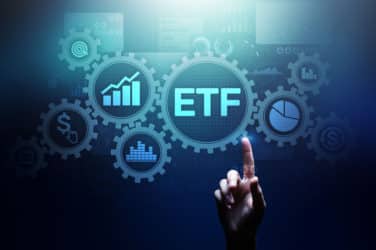
By Phil Mackintosh, Chief Economist, Nasdaq
As we wrap 2021 and look back at the year, we see the powerful impact that the Covid stimulus had on the economy and trading.
With asset valuations and government debt around all-time highs, coming in for a soft landing might prove challenging. What happens in 2022 depends a lot on whether the stimulus is already fading or whether it’s just starting to heat up the economy.
It’s also becoming clear from the data that Covid will not be gone by year-end either. Omicron seems far more contagious, which could cause renewed shutdowns and exacerbate supply chain issues. Or new vaccinations combined with antiviral drugs and a (hopefully) less virulent strain could actually signal the final stages of the Covid pandemic.
One thing seems certain: There is potential for more uncertainty in 2022. That, in turn, could mean periods of volatility in bond and stock markets, which has historically been good for traders and liquidity.
2021 was driven by stimulus
It’s hard to believe that just 12 months ago, most of us were excited about the prospect of newly approved vaccines that might finally end the Covid pandemic. Additional fiscal stimulus payments made in January and February seemed warranted, given the quarantined state of much of the services sector. Persistent high unemployment also seemed to justify the extension of pandemic benefits, which finally expired in early September.
Looking back now, we can see that those trillions of dollars in payments did more than just get the economy back on its feet.
A stimulus for stocks
There is evidence that some of the stimulus helped power a new generation of stock investors, almost doubling the estimated retail trading and contributing net buying of over $140 billion in stocks and ETFs over the past year.
That undoubtedly helped support the market rally. Although, with the market trading around $450 billion each day across stocks and ETFs, retail net buying remains a fraction of total equity market liquidity.
Chart 1: Retail trading increased as Covid started, with net buying adding to over $140 billion in 2021

Retail trading helped elevate volumes in the overall equities market too. Our estimates put retail activity at more than $30 billion each day. Others estimated that retail added close to 25% of all shares traded.
Not surprisingly, considering that growth in retail, U.S. stock and options markets are expected to set new records for volumes in 2021. For stocks, that represents over 11 billion shares trading each day, or $565 billion. For options that represented 37 million contracts (each contract is for 100 shares) with gross exposure adding to around $754 billion each day (although the more relevant, delta adjusted exposure is much lower).
Chart 2: Market-wide stock and options activity hit records

A stimulus for spending
Stimulus checks were intended to restart the economy, so it’s comforting to see that they also seemed to do that. The impact of each stimulus check coincides almost perfectly with gains in retail spending.
And the data shows that spending has persisted at these new higher levels.
Chart 3: 2021 was a year driven by stimulus

That, in hindsight, represented a dramatic increase in demand for goods, which in the U.S. is running at all-time high levels. While that helped power the manufacturing sector to a “V-shaped” recovery, it also contributed to higher demand in ports than ever seen before. That, in turn, contributed to supply chain bottlenecks and shortages for many products locally.
Not surprisingly, delays and supply shortages led to input prices and costs rising.
Then, of course, came the impact of vaccines. Mobility data also shows that as vaccines were distributed, much of the (much larger) services sector saw a boost in customers, many back to pre-Covid levels by summer. That meant even more jobs returned, which helped unemployment fall back to just 4.2%.
Chart 4: Vaccines boosted the services sector

However, despite all the new jobs, not all the workers returned. Participation rates highlight the absence of around 4 million workers, exacerbating labor shortages. Data shows some have retired, while others may now be living off a single income or Covid savings in order to do additional childminding or avoid going back to high-contact, high-Covid-risk roles.
In addition, with borders closed, immigration has been unable to supplement worker shortages.
As a consequence of the labor shortage, wages have been rising. Small business data suggests wage costs are rising more broadly than any time in more than 25 years. Other data suggests the main beneficiaries are lower-income workers, with wages in the leisure and hospitality sectors up more than 12% in the past 12 months.
Chart 5: More small companies are raising wages than at any time in the past 35 years

Higher costs for companies offset by higher sales
All this translates to higher costs for companies, which should be bad for their bottom lines and stock valuations.
However, earnings have been strong. That, combined with low interest rates, has helped support markets near all-time highs. It also shows that companies have been able to raise prices, which means more widespread inflation for consumers. In the U.S., inflation is closing out the year at a staggering 6.8%, although inflation is also rising in many other countries.
Chart 6: Inflation is becoming a bigger, and more global, problem

Governments need to raise rates to slow spending
This leaves governments around the world in a precarious position.
The Covid stimulus has left economies with too much demand and not enough workers. Inflation is resulting, which hurts consumer confidence and can eat away at longer-term wealth.
Normally, governments around the world would be starting to raise rates to encourage more saving and less spending to slow their economies down. And that’s just what is happening. In fact, earlier this week, the Fed announced a plan to raise rates much more quickly than it was expecting just months ago, and the Bank of England actually raised rates.
Chart 7: The Fed and the market are pricing in three years of rising rates

The idea of rate rises is to make investors think more about saving, thereby reducing spending and slowing the demand down.
With interest rates so low, most bond investors have already been losing money after accounting for the value lost to inflation. But rising rates also mean bond prices fall. Performance of U.S. Fixed Income ETFs (below) shows that’s happening already. Only inflation-protected TIPs are seeing mostly positive returns year-to-date, and (as expected) longer duration funds are falling more as rates start to rise.
Chart 8: As rates rise, bonds returns are mostly negative

If all goes to plan, spending will slow on its own and with a few rate hikes
If all goes to plan, the Fed will raise rates just a little, while at the same time, retail spending will run out of steam as savings run down.
The latter part is possible. Remember, the last stimulus check was paid back in February, and the pandemic benefits expired early in September. Although household cash balances remain elevated, data suggests the savings rate has fallen back to pre-covid levels, with credit card debt showing some households already returning to more normal patterns of (more constrained) spending.
Chart 9: Savings rates are falling back to normal; will that lead to reduced spending naturally?

Combined, that would take the heat out of the economy, allowing inflation to calm while leaving interest rates at levels that still support business growth and valuations. Ideally, Covid vaccines and treatments also mean the threats to the services industry also subsides, bringing workers back and wage pressures down.
That would mean a broader economic recovery with less inflationary pressures. Stock valuations should hold, although it might mean lower trading activity, especially from retail, and relatively slower growth in earnings (and stock prices) going forward.
That seems to be what the market is mostly pricing in too – with long-term yields still below the levels of expected longer-term inflation and stock market valuations near all-time highs.
What else could happen?
The past week it’s again clear that Covid has not gone away.
The highly contagious Omicron could turn out to be more severe than current anecdotal evidence. If that’s the case, the chance of a rapid cooling of the global economy, combined with even more supply chain disruptions and a prolonged halt on international travel, increase.
On the other hand, if Omicron ends up being dominant but benign, it may spell the end of the deadly pandemic. That would bring spending and jobs back to the services sector – adding fuel to an already hot economy.
In short, Covid’s path in 2022 could make the global economy much cooler or much hotter, regardless of what the central banks do to rates.
That makes the task at hand for governments much more complicated. And that’s before we add in the fact that much higher rates not only increase the risks of recession but, with such an explosion of debt, also make it harder for governments to balance their budgets.
Volatility isn’t gone yet
In short, there remains a lot of uncertainty ahead for markets.
Interestingly, markets seem to have been saying that was the case all this year, too.
Comparing options and equities markets in 2021 tells an interesting story. Throughout the year, the expected volatility from options markets (VIX) has remained relatively high, averaging almost 20. That’s not surprising given all the risks we’ve talked about above, from shortages to rising inflation to new Covid variants.
However, the reality has turned out to be far different.
Actual stock returns were fare less volatile, with realized volatility at 12.9% p.a. That’s not far from some of the lowest readings over the past two decades (orange lines in the chart below).
Implied volatility is almost always higher than realized volatility (premium shown by grey bars) for some good mathematical reasons: large market shocks are more likely to occur than the options pricing formula model expects.
Still, last year, the premium of implied over realized hit the highest average level since at least 2000. That shows that for most of this year, options markets were far more worried about the future than it turned out they needed to be.
Chart 10: Realized volatility has been among the lowest in two decades, but options markets consistently expected much volatility

What does this all mean?
As we head into 2022, equities are looking fully valued, interest rates are set to rise and Covid variants continue to spread around the world, possibly disrupting economies and supply chains, just as stimulus spending runs out.
Although markets already know all this, they don’t know how things will actually turn out.
For central governments, 2022 is likely going to be a challenge. Economies in Europe and the U.S. have excess demand and inflation. If governments raise rates too fast, they could cause an early recession. If they raise them too slowly, inflation could get worse.
For investors, a lot hinges on central banks’ ability to engineer a landing somewhere in the middle, as a recession, or much higher interest rates, could both hurt valuations.
Uncertainty appears to be the only certainty for 2022. Options markets might finally get it right. That’s usually good for traders, with periods of volatility in bond and stock markets leading to elevated liquidity – even if retail trading starts to fade.






